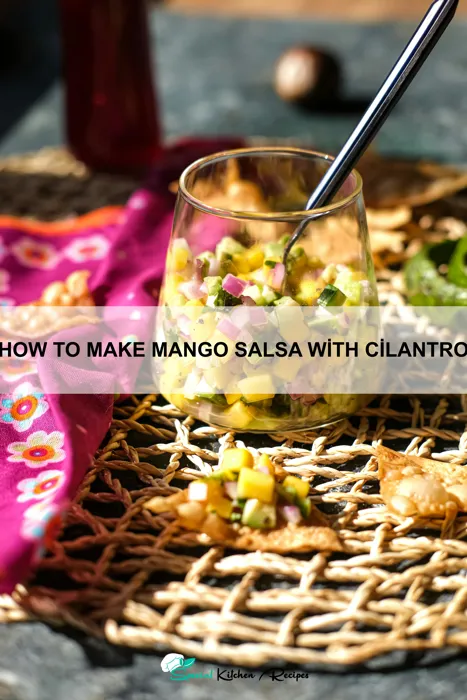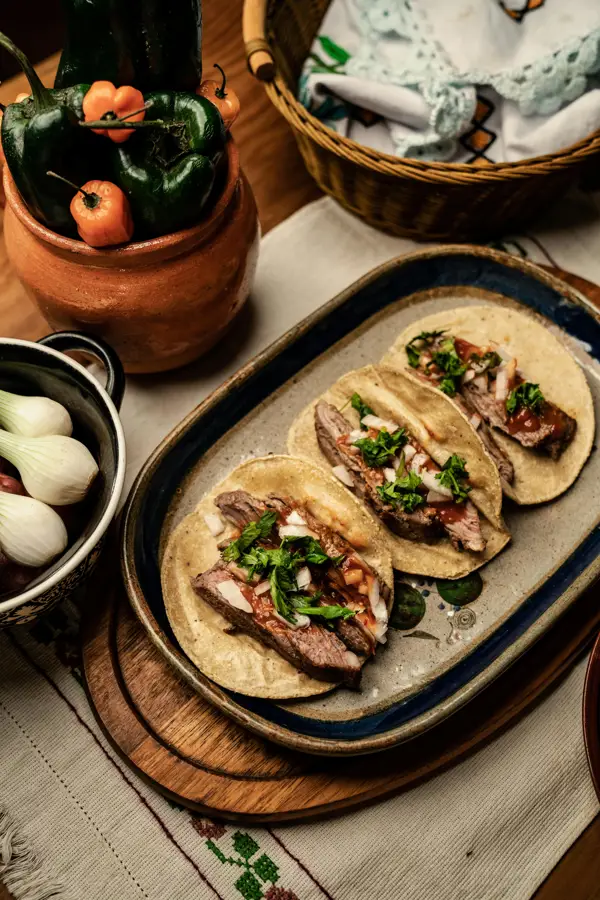Mango salsa, a vibrant and refreshing condiment, boasts a history as rich and complex as its flavor profile. While pinpointing its exact origin is difficult, its popularity undeniably stems from the confluence of Latin American and Caribbean culinary traditions. The use of mangoes, a fruit indigenous to South Asia, spread across the globe through trade routes, eventually finding a home in the Americas where it blended seamlessly with native ingredients and cooking styles. The exact timeline of mango salsa’s development is unclear, but its rise in popularity is closely linked to the increasing accessibility of fresh mangoes in North America and Europe during the latter half of the 20th century. Its simple yet effective combination of sweet, tangy, and spicy elements quickly gained traction, becoming a staple in many cuisines.
The cultural significance of mango salsa varies widely depending on the region. In Mexico, for instance, it might be a part of celebratory meals, incorporating locally grown chilies and herbs. In the Caribbean, it could be served alongside grilled fish or chicken, reflecting the region’s emphasis on fresh seafood and flavorful spices. The versatility of mango salsa is a key factor in its widespread appeal; it can be adapted to suit a myriad of palates and culinary preferences. The addition of cilantro, a key component of this recipe, adds a distinctly herbaceous note. Cilantro’s use is widespread throughout Latin American and Asian cuisines, adding another layer of rich cultural history to this simple dish. Interestingly, the perception of cilantro’s flavor is genetically influenced; some individuals experience a soapy taste, a phenomenon affecting approximately 10-14% of the global population.
Today, mango salsa is far from a niche item. Its popularity has exploded, with countless variations appearing in cookbooks, online recipes, and restaurant menus worldwide. Its ease of preparation makes it a crowd-pleaser for both novice and experienced cooks. The global mango market is a multi-billion dollar industry, highlighting the fruit’s significant economic importance. While precise statistics on mango salsa consumption are unavailable, its ubiquitous presence in both casual and fine dining settings suggests a significant and continually growing demand. The recipe we will explore today offers a classic approach to this delicious condiment, allowing you to experience its vibrant flavors and rich cultural heritage firsthand.
Ingredients and Measurements
Creating a vibrant and flavorful mango salsa hinges on using fresh, high-quality ingredients. The precise measurements below are a guideline; feel free to adjust based on your personal preferences and the size of your mangoes. Taste as you go and adjust accordingly!
For this recipe, we’ll be using ripe, but still firm, mangoes. Overripe mangoes can become mushy, resulting in a less desirable texture for the salsa. Aim for mangoes that yield slightly to gentle pressure but aren’t overly soft.
We’ll need approximately 2 large ripe mangoes (about 1.5 pounds total). If your mangoes are smaller, you may need to add one more. To prepare them, wash the mangoes thoroughly, peel them using a vegetable peeler, and then dice them into roughly ½-inch cubes. Avoid making the pieces too small, as you want to retain some texture in the finished salsa.
Next, we’ll add the zest and juice of 1 lime. The lime juice is crucial for balancing the sweetness of the mango and preventing browning. Freshly squeezed lime juice always tastes superior to bottled juice. For the zest, use a microplane or fine grater to obtain approximately 1 teaspoon of lime zest. Be careful not to grate too deeply, or you might get some of the bitter white pith.
Fresh cilantro is essential for the classic mango salsa flavor. We’ll use ½ cup of tightly packed fresh cilantro leaves, finely chopped. Don’t over-chop the cilantro; some slightly larger pieces add texture and visual appeal. If cilantro isn’t your favorite herb, you can substitute with a similar amount of finely chopped mint or a combination of both.
For a touch of heat, we’ll incorporate 1-2 jalapeños, finely minced (remove seeds and membranes for less heat). Start with one jalapeño and add more to taste, as the heat level varies depending on the jalapeño.
Finally, we need a touch of salt and red onion for a nice balance. Add ¼ cup finely diced red onion and ½ teaspoon of kosher salt. Adjust the salt to your preference after tasting the salsa.
Remember to prepare all your ingredients before you begin mixing to ensure a smooth and efficient process. Enjoy your delicious homemade mango salsa!
Equipment and Utensils
Making a vibrant and flavorful mango salsa with cilantro requires the right tools to ensure a smooth and efficient process. While you might already have most of these items in your kitchen, having them readily available will make the preparation much easier and faster.
First and foremost, you’ll need a sharp knife. A chef’s knife (approximately 8 inches) is ideal for efficiently chopping the mangoes and other ingredients. A dull knife will make the process tedious and potentially dangerous, leading to uneven cuts and bruised fruit. Invest in a good quality knife and keep it sharp; this will make all your food preparation tasks easier and safer.
Next, you’ll need a cutting board. Opt for a large, sturdy cutting board made of wood or plastic, ensuring it’s clean and free from cracks. A smaller board might prove too cramped for comfortably chopping the mangoes and other ingredients simultaneously. Avoid using glass cutting boards as they can dull your knives quickly.
A medium-sized mixing bowl (approximately 1.5 to 2 quarts) is essential for combining all the ingredients. This size allows for adequate mixing without being overly large and cumbersome. Choose a bowl that is easy to handle and large enough to accommodate all the chopped fruits, vegetables, and herbs.
For measuring ingredients accurately, you will need a set of measuring cups and spoons. Precise measurements are important for achieving the perfect balance of flavors in your mango salsa. Having both metric and imperial measuring tools can be beneficial depending on your recipe preference.
Finally, you’ll need a spoon or spatula for gently mixing the salsa ingredients together once everything is chopped. A sturdy spoon will effectively combine the ingredients without damaging the mango pieces. Avoid using a whisk as it may over-mix the salsa and result in a mushy texture.
Optional, but highly recommended, is a food processor or a fine grater for finely mincing the red onion and jalapeño. This will help to ensure that these ingredients are evenly distributed and don’t overpower the delicate flavor of the mango. However, a sharp knife can also achieve this if you have the patience for fine chopping.
Lastly, consider having a serving bowl ready to showcase your beautifully prepared mango salsa. A clear glass bowl helps highlight the vibrant colors of the ingredients.
Preparation of Mango
Selecting the right mangoes is crucial for a delicious mango salsa. Choose ripe, but firm mangoes. Avoid mangoes that are overly soft or bruised, as they may be too mushy for the salsa. A good indicator of ripeness is a fragrant aroma at the stem end. For this recipe, we’ll need approximately two medium-sized mangoes (about 1 pound total weight).
Begin by thoroughly washing the mangoes under cold running water. This removes any dirt or pesticides that may be present on the skin. Scrub gently with your fingers or a soft brush to ensure cleanliness.
Next, prepare the mangoes for dicing. There are several ways to do this, depending on your preference and the type of mango. For most varieties, you can simply slice the mango lengthwise along the flat sides of the pit. This will create two halves, each containing a large, flat pit. Alternatively, you can cut the mango into smaller pieces initially to make handling easier.
Once you’ve sliced the mangoes around the pit, use a sharp knife to carefully cut away the flesh from the pit. Work slowly and cautiously to avoid cutting yourself. You can use a spoon to help scoop out any remaining flesh clinging to the pit, maximizing your yield.
Now, it’s time to dice the mango. Aim for a consistent dice size of about 1/2 inch. This ensures even cooking and a pleasant texture in the final salsa. Uniformly sized pieces also contribute to a visually appealing presentation. Use a sharp knife and cut the mango flesh into cubes. Discard any remaining skin or fibrous parts.
Professional Tip: To prevent browning, immediately place the diced mango in a bowl and cover it with a little bit of lime juice. The acid in the lime juice helps to slow down the oxidation process, preserving the vibrant color and freshness of your mango.
Once all the mango is diced and treated with lime juice, you’re ready to move on to the next step in making your mango salsa. Remember, proper mango preparation is key to achieving the perfect balance of flavor and texture in your dish. Freshly diced mango is best; avoid using canned or frozen mango as it will significantly alter the texture and flavor.
Preparation of Other Ingredients (Onion, Cilantro, etc.)
While the mangoes are being prepped, let’s tackle the other crucial components of our vibrant mango salsa: the onion and cilantro. The success of this salsa hinges not just on ripe mangoes, but also on the proper preparation of these supporting ingredients. We’ll be using a half of a medium-sized red onion and a generous bunch of fresh cilantro.
Onion Preparation: Start by peeling the red onion. A sharp knife is essential for this; a dull knife will only bruise the onion, releasing more of its pungent compounds and potentially making your eyes water excessively. Once peeled, we’ll finely dice the onion. Aim for a consistent dice of about 1/4 inch. Avoid making the dice too large, as large chunks of onion will overpower the delicate sweetness of the mangoes. Too small, however, and the onion will be lost in the salsa.
Tip: To minimize onion tears, you can chill the onion in the refrigerator for 30 minutes before chopping. This slows down the release of the volatile compounds that cause your eyes to water. Alternatively, you can soak the chopped onion in cold water for a few minutes to help reduce the pungency.
Cilantro Preparation: Wash your cilantro thoroughly under cold running water. Remove any tough stems; we’ll primarily be using the leaves. Once washed, gently pat the cilantro dry with paper towels. This will prevent excess moisture from watering down your salsa. Then, finely chop the cilantro leaves. The amount you use is a matter of personal preference; some prefer a more pronounced cilantro flavor, others less. For this recipe, we’ll use about 1/2 cup of packed, chopped cilantro. Avoid over-chopping the cilantro, as it can bruise and lose its vibrant green color and fresh flavor.
Optional additions: To further enhance the flavor profile, consider adding other elements. A finely minced jalapeño pepper (about 1/4 of a jalapeño, deseeded if you prefer less heat) can add a delightful kick. Similarly, a small amount of finely diced red bell pepper (about 1/4 cup) will add both color and sweetness. Remember to adjust quantities to your liking. Always taste and adjust seasonings as you go, ensuring a balanced flavor profile.
With the onions and cilantro properly prepared, we’re ready to combine them with the mangoes and other ingredients to create a truly delicious mango salsa.
Combining Ingredients and Mixing
With all your ingredients prepped and ready, it’s time to bring your mango salsa to life! This stage requires careful attention to detail to ensure the perfect balance of flavors and textures.
Begin by combining the diced mango (approximately 2 cups, from about 2 ripe mangoes) in a medium-sized bowl. Ensure your mango is ripe but firm enough to hold its shape; overly ripe mango will become mushy. The sweetness of the mango will form the base of your salsa’s flavour profile, so selecting high-quality fruit is crucial.
Next, add the finely chopped red onion (1/4 cup). Don’t be shy with the onion, as it provides a lovely counterpoint to the mango’s sweetness, but avoid overdoing it, as too much onion can overpower the other flavors. A sharp knife and careful chopping will ensure a pleasant bite rather than overwhelming chunks.
Gently incorporate the finely chopped cilantro (1/2 cup packed). Fresh cilantro is essential for the bright, herbaceous notes of this salsa. If using dried cilantro, use significantly less (approximately 1 tablespoon) as it is much more concentrated in flavour. Overuse of cilantro can lead to a soapy taste.
Now, add the jalapeño pepper (1-2, finely minced, depending on your spice preference). Remove the seeds and membranes for a milder salsa; leave them in for a spicier kick. Remember that the heat of jalapeños can vary, so start with one and add more to taste.
Finally, add the lime juice (2 tablespoons) and salt (1/2 teaspoon). The lime juice is crucial for balancing the sweetness of the mango and adding a necessary acidity. The salt enhances all the other flavors. Taste and adjust seasonings as needed. You might want to add a pinch more salt or lime juice depending on your preference and the sweetness of your mangoes.
Once all ingredients are combined, gently toss everything together using a spatula or large spoon. Avoid overmixing, as this can bruise the mango and release excess juices which can make your salsa watery. A few gentle folds are sufficient to ensure everything is evenly distributed. Allow the salsa to sit for at least 15 minutes at room temperature to allow the flavors to meld. This resting period will significantly improve the overall taste and consistency of your mango salsa.
Serve immediately or chill for later. If chilling, do so for no longer than 2 hours to prevent the mango from becoming overly soft.
Taste and Adjust Seasoning
Tasting your mango salsa at this stage is crucial. The flavors should be vibrant and balanced, but individual mangoes can vary significantly in sweetness and acidity. Don’t be afraid to adjust the seasoning to perfectly complement your chosen mangoes and personal preference. Start by tasting a generous spoonful of the salsa directly from the bowl.
Consider the sweetness first. If the salsa is not sweet enough, add a teaspoon of honey or agave nectar at a time. Taste again after each addition, allowing the sweetness to integrate before adding more. Too much sweetness can overpower the other flavors, so proceed cautiously. For a subtle sweetness boost, consider adding a pinch of granulated sugar instead. Remember that the sweetness of the mangoes themselves will influence how much additional sweetener you need.
Next, assess the acidity. If the salsa lacks brightness, a squeeze of fresh lime juice can work wonders. Begin with ½ a lime (about 1 tablespoon of juice) and taste again. You can gradually add more lime juice in ¼ lime increments until you achieve the desired tanginess. Be mindful not to add too much lime, as it can make the salsa overwhelmingly sour.
Evaluate the saltiness. Salt enhances the other flavors, bringing them into balance. Start with ¼ teaspoon of kosher salt and taste. If needed, add another pinch, up to ½ teaspoon total. Always add salt gradually, as it’s easier to add more than to take it away. Use high-quality sea salt or kosher salt for the best flavor. Fine table salt can be used, but remember that it’s more concentrated than kosher salt, so use less.
Don’t forget the heat! If you desire a spicier salsa, add a pinch of cayenne pepper or a few drops of your favorite hot sauce. Start with a very small amount and taste frequently, as chili peppers can build in heat quickly. Remember that the heat will intensify as the salsa sits, so it’s better to err on the side of caution.
Finally, check the overall balance. Once you’ve adjusted the sweetness, acidity, salt, and heat, take a final taste. Are all the flavors working together harmoniously? If any one flavor stands out too much, adjust accordingly. The goal is a well-rounded salsa where no single ingredient dominates. Remember that your personal preferences are key. There is no single right way to season your mango salsa; the best seasoning is the one you enjoy most.
Recommendations
For the best flavor, use ripe but firm mangoes. Overripe mangoes will result in a mushy salsa. Adjust the amount of jalapeño to your preferred spice level; start with less and add more as needed. If you don’t have fresh cilantro, you can substitute with a similar amount of chopped parsley, though the flavor profile will be slightly different.
Serving Suggestions: This vibrant mango salsa is incredibly versatile! It’s delicious served as a topping for grilled chicken, fish, or pork. It also makes a fantastic accompaniment to tacos, burritos, and fajitas. Consider using it as a topping for baked sweet potatoes or as a refreshing addition to salads. A dollop on top of grilled shrimp or scallops adds a delightful sweet and spicy contrast.
Storage: Store leftover mango salsa in an airtight container in the refrigerator for up to 3 days. Do not freeze the salsa, as freezing will alter its texture and flavor. For best results, consume within 2-3 days for optimal freshness and flavor.
Complementary Dishes: This salsa pairs exceptionally well with dishes featuring grilled meats, especially those with smoky or spicy flavors. It also complements lighter fare such as fish tacos, grilled chicken salads, and even breakfast burritos. Consider serving it alongside tortilla chips for a simple appetizer or as a topping for a grilled cheese sandwich for an unexpected twist.
Nutritional Information (per serving, approximate): The exact nutritional content will vary depending on the specific ingredients and serving size. However, a typical serving (about ½ cup) will likely contain approximately 100-150 calories, with a good source of vitamin C and fiber from the mango. The jalapeño will contribute some vitamin A and vitamin C. The cilantro adds a small amount of vitamin K and other nutrients. Note: This is an estimate and may vary depending on ingredient quantities and types.





